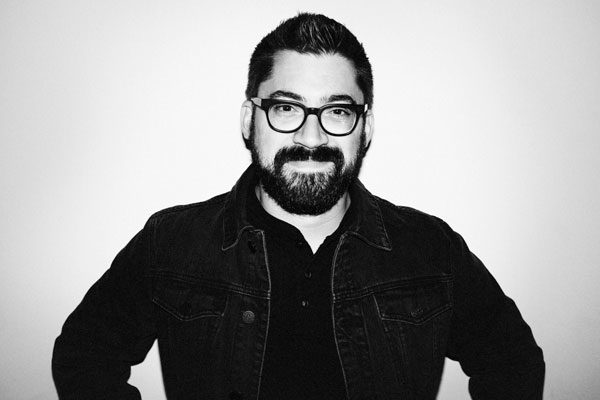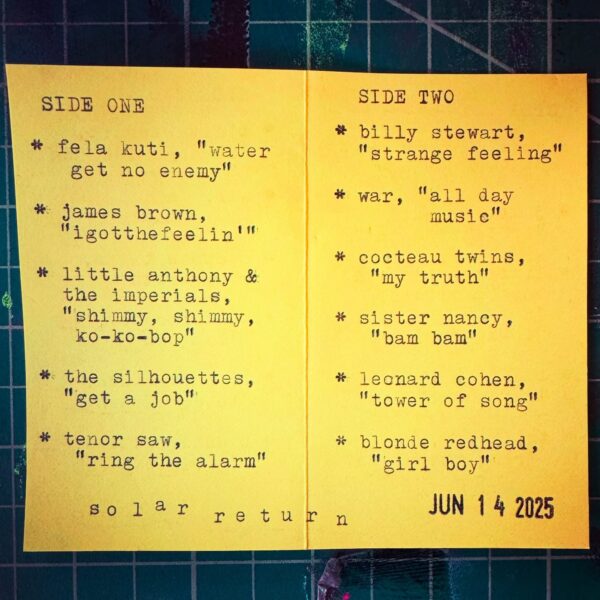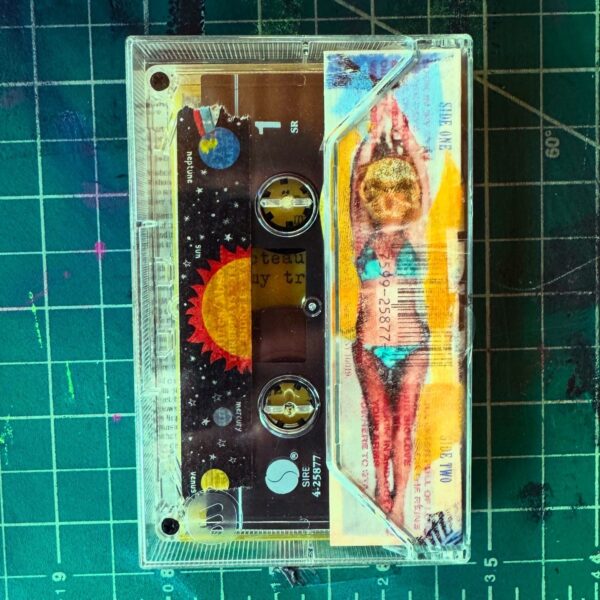
Click here to subscribe.

Click here to subscribe.

I celebrated my 42nd trip around the sun by working on my book, but I took a tiny break to make a new monthly mixtape to play by the pool. (Similar vibes to last June’s mixtape.)

I made it from a sealed, pre-recorded cassette I got for 99 cents at the record store. I taped over the cassette’s protection tabs and then I taped over the music and then I taped over the artwork.

You can listen on Spotify, Apple Music, or YouTube.
Filed under: mixtapes
I spent the first half of the year writing and drawing the next book, so I guess it makes sense that I’ve written so many newsletters about deadlines.
In March, I made a zine called Death & Deadlines:
I can really relate to this excerpt from Terry Teachout’s Duke: A Life of Duke Ellington:
“He was the most chronic of procrastinators, a man who never did today what he could put off until next month, or next year. He left letters unanswered, contracts unsigned, watches unworn, and longtime companions unwed, and the only thing harder than getting him out of bed in the afternoon was getting him to finish writing a new piece of music in time for the premiere. “I don’t need time,” he liked to say. “What I need is a deadline!”

Two weeks ago I wrote about the 5 things that work for me when I’m on deadline:
You spend most of your life as a writer being misunderstood by the people around you, but the one thing people seem to respect is when you say, “Sorry. I can’t. I’m on deadline.”
This week I wrote about the 7 types of deadline music:
The majority of my work in the studio has to do with words, so most of the time, I can’t listen to podcasts or audiobooks. (In fact, if there’s a podcast or an audiobook I really want to listen to, I’ll go out of my way to schedule time to work on something non-verbal, like a collage.)
After all that… I have hit my deadlines!
Last Friday’s newsletter begins:
My favorite thing about reading “the classics” is that they’re almost always weirder than you think they are. For example: within 50 pages of War and Peace, a bunch of drunks tie a policeman to a bear and throw them in the river. (I try to read a big book every summer, so I figured why not read one of the biggest?)
With backup from Italo Calvino’s Why Read The Classics:
“Classics are books which, the more we think we know them through hearsay, the more original, unexpected, and innovative we find them when we actually read them…”
Read more: “The classics are weird.”
I had two really nice conversations recently that I thought were worth sharing:
1. I talked to cartoonist Jason Chatfeld about attention, showing up, comedy, and how to keep going.
What started as a conversation about creative routines turned into a masterclass on attention management, the importance of play, and why treating your art like a comedy might be the secret to actually surviving as a creative person.
2. I talked to Marcus Goodyear and Camille Hall-Ortega of The Echoes Podcast about what it means to create something beautiful in the age of AI.
An excerpt that seemed to resonate with people:
You can listen to our entire conversation here.
My pocket notebook is my least-formal of my 4 notebooks, so it usually turns out to be my favorite and most surprising notebook to flip through. Here’s a peek inside my latest.
This site participates in the Amazon Affiliates program, the proceeds of which keep it free for anyone to read.